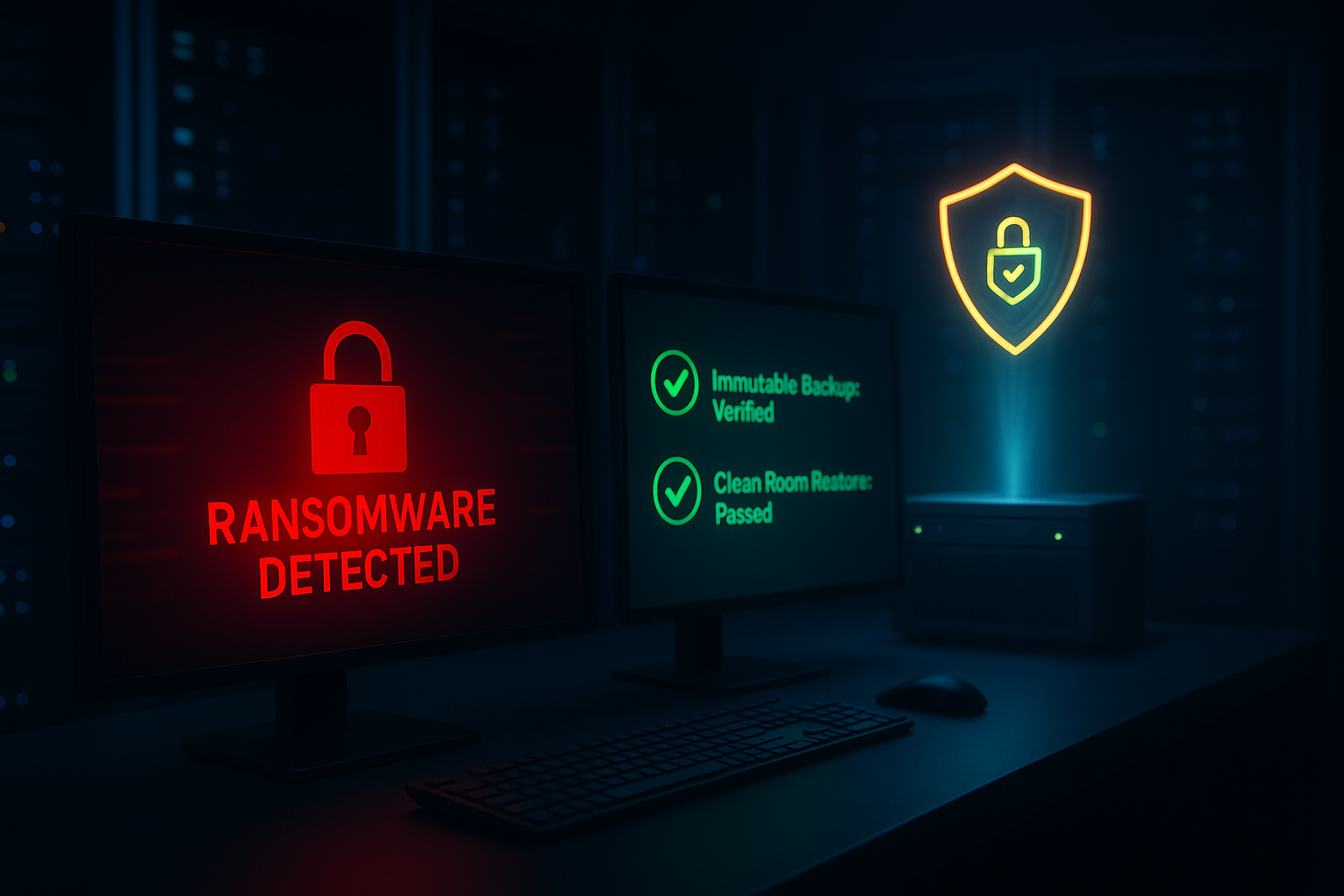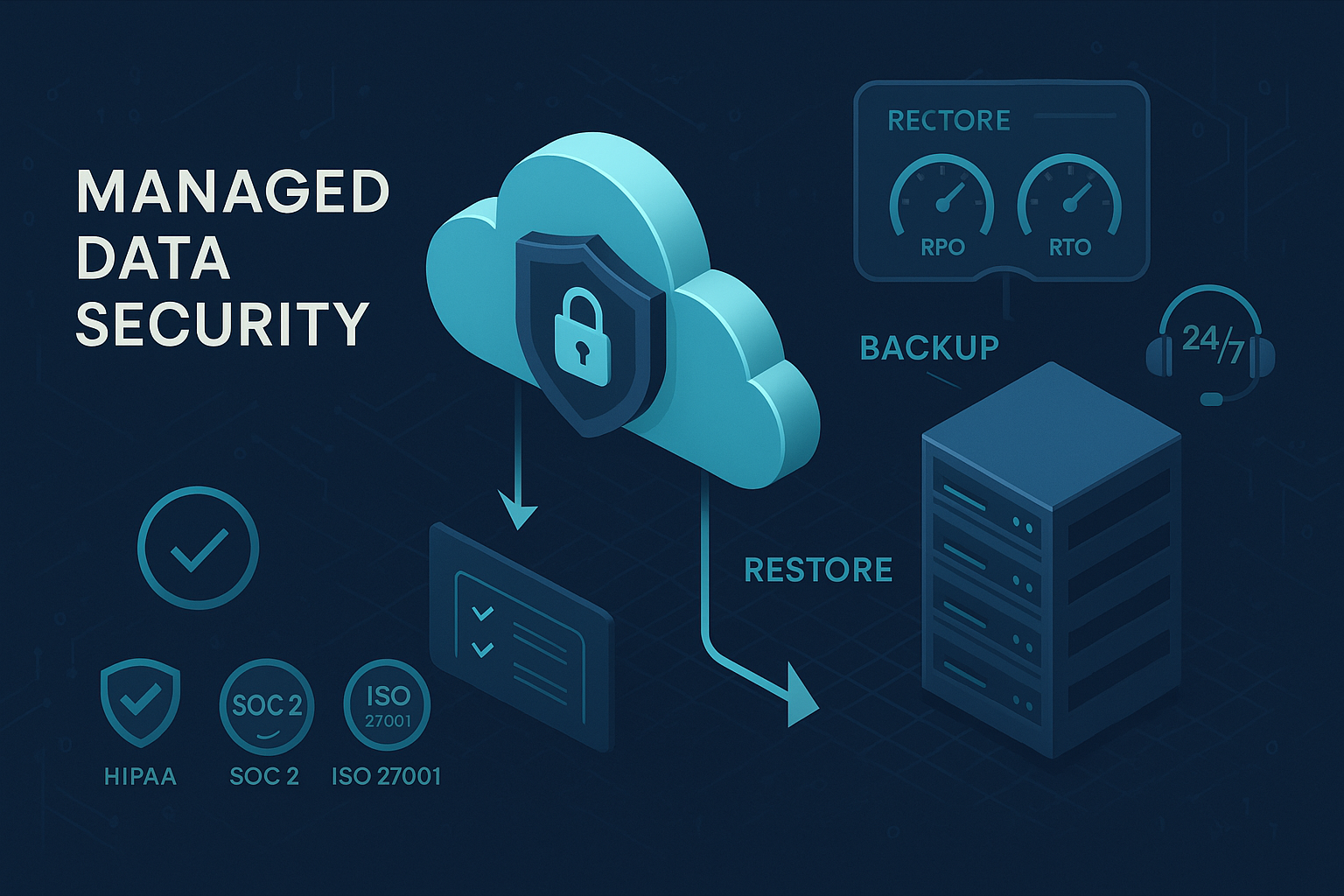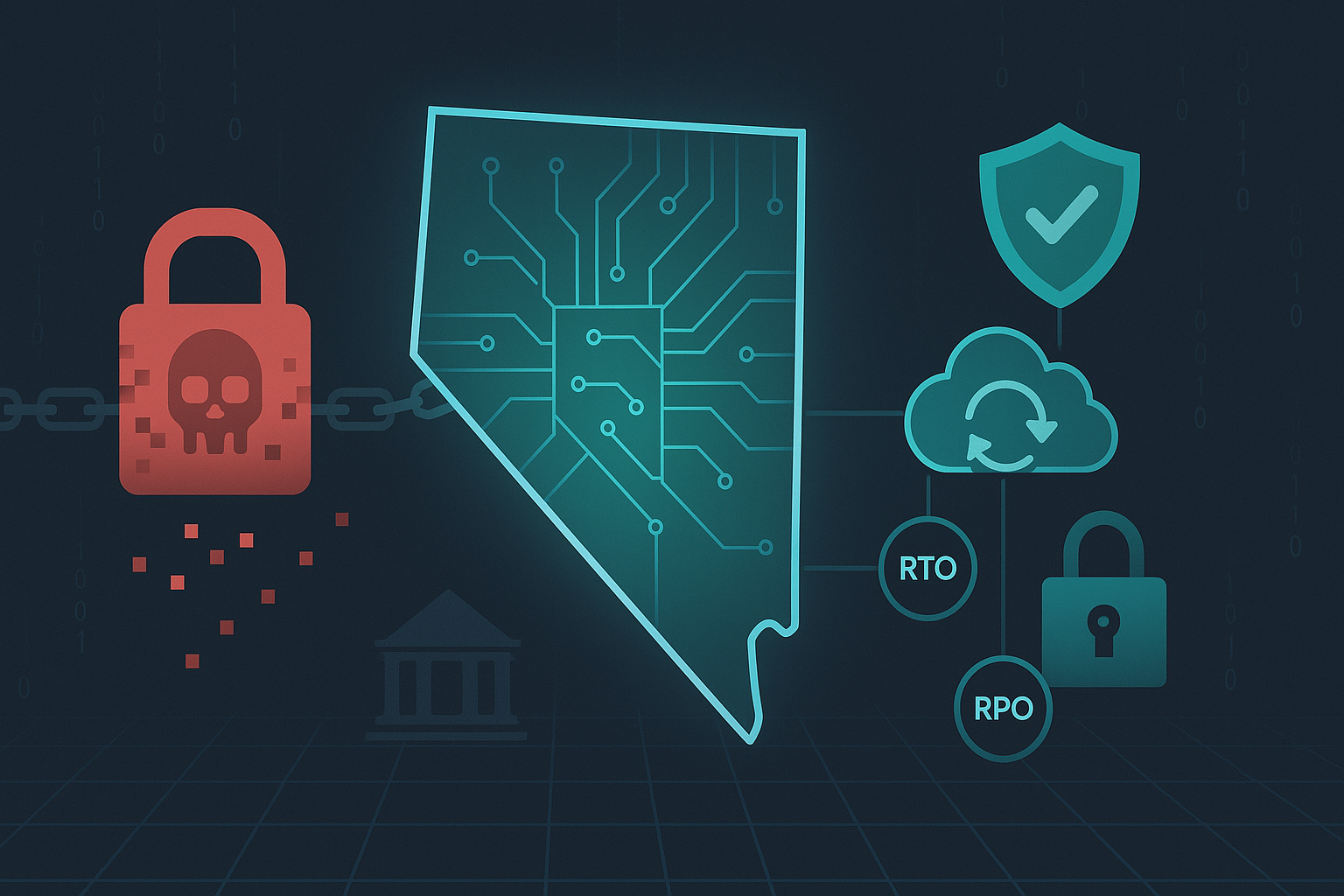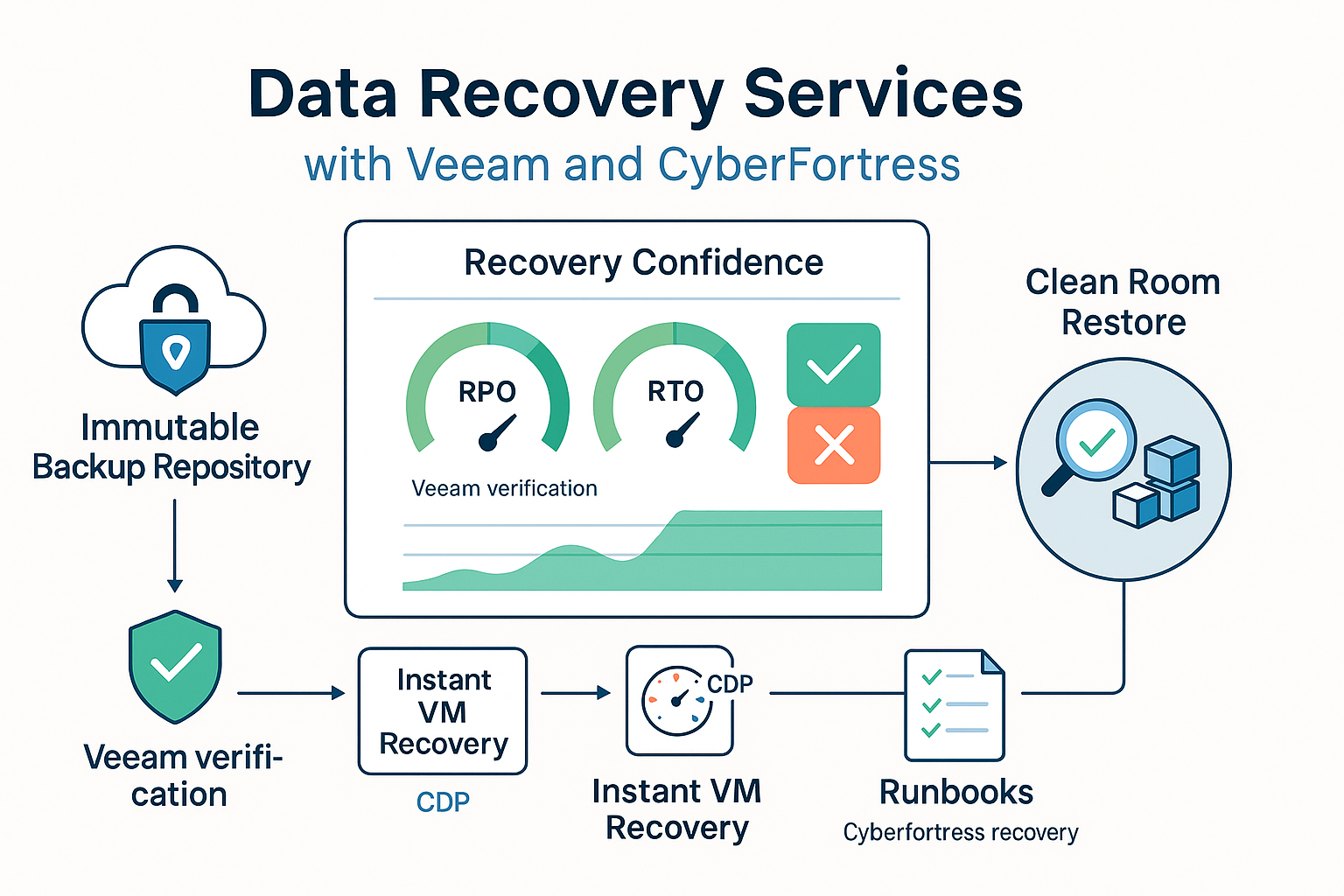DATA PROTECTION TRENDS, NEWS & BACKUP TIPS
Business Continuity That Stands Up To Today’s Risks
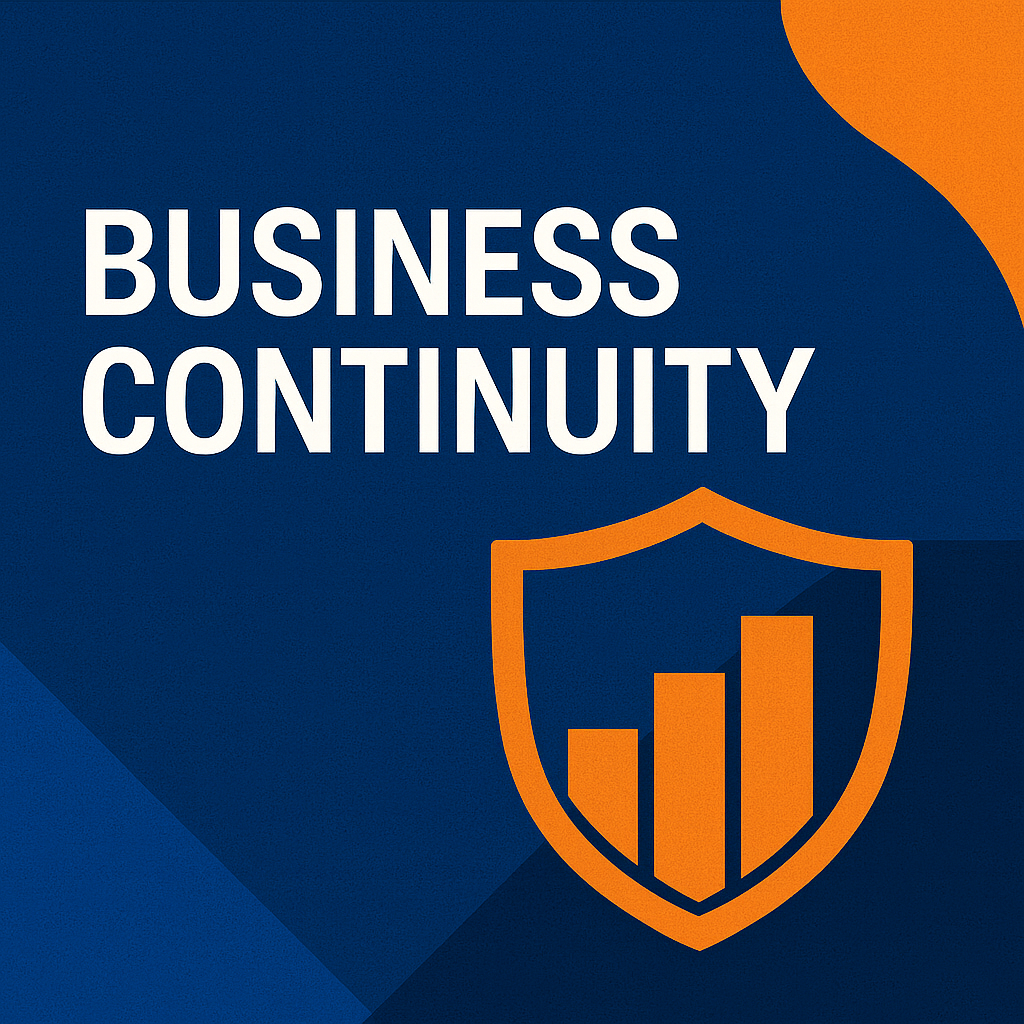
Business continuity used to be a quarterly tabletop exercise. Today it is a daily requirement. Ransomware remains disruptive and costly, recovery timelines are getting longer, and the true impact of downtime reaches far beyond lost revenue. Recent research shows the average global cost of a data breach rose to 4.88 million dollars in 2024, driven by operational disruption and extended response activities.
At the same time, the price of being offline continues to climb. Independent surveys find that over 90 percent of mid size and large organizations now estimate downtime at more than 300,000 dollars per hour, with a significant share reporting one million dollars per hour or higher. That figure excludes litigation or regulatory penalties and illustrates why resilience is a board level priority.
Ransomware is a major driver of this risk. Multiple studies in 2025 show attackers adapting their tactics, and claims data confirms higher loss severity even when the number of paid loss events fluctuates. Recovery often takes weeks, not days, especially when backups are targeted during the attack. In many cases, organizations require a month or more to fully restore operations.
The takeaway is simple. A continuity plan must assume a breach, assume backup targeting, and prioritize rapid, verified recovery. The fastest route to that outcome is a layered data protection strategy that pairs immutable backup with orchestrated disaster recovery and guided restore. That is where CyberFortress comes in.
Three building blocks for modern continuity
Backup as a Service (BaaS): clean, immutable copies you can trust
Attackers increasingly aim at backup repositories to block recovery or force payment. In Veeam’s 2025 findings, the majority of organizations report attempts to compromise backups, which is why immutability has moved from best practice to baseline.
CyberFortress BaaS delivers policy driven, immutable backups with air gapped options, role based access controls, and routine restore testing. The goal is simple. Create reliable, tamper resistant restore points that survive an attack and stand ready for recovery.
Key outcomes:
- Reduce the chance of corrupted restore points.
- Shorten the time to first byte during recovery due to known good copies.
- Prove recoverability with scheduled test restores and documentation for audits.
Disaster Recovery as a Service (DRaaS): orchestrated failover when minutes matter
Downtime is expensive and stressful. Studies show recovery time objectives often slip without automation or runbook discipline. CyberFortress DRaaS provides replication, runbook automation, and push button failover to a clean environment.
We map your applications, dependencies, and boot orders. We pre stage connectivity and security controls. We validate the plan through regular failover testing. When a disruption occurs, the process follows a practiced playbook rather than ad hoc heroics.
Key outcomes:
- Meet recovery time and recovery point targets with predictable procedures.
- Fail over entire services, not just individual machines.
- Test without disrupting production to build executive confidence.
Backup and Recovery as a Service (BRaaS): hands on help during the moments that count
The most painful part of recovery is not just technology. It is coordination, validation, and communication under pressure. Recent incident reports show that many organizations underestimate recovery complexity and overestimate how quickly they can restore core systems.
CyberFortress BRaaS pairs proven tooling with expert guidance. Our team helps classify applications, set realistic RTO and RPO targets, document runbooks, and lead guided recoveries during incidents. The outcome is faster, cleaner restoration that keeps customers, partners, and regulators informed.
Key outcomes:
- Fewer surprises during restore due to guided runbooks and rehearsals.
- Better prioritization that brings the most critical services back first.
- Clear executive ready status updates during an incident.
Trends shaping continuity plans in 2025
Recovery time is the new risk multiplier. Organizations that recover in days fare far better than those that take weeks. Reports document multi week average recovery windows for significant incidents, which compounds revenue loss and reputational harm. This is why orchestration and pre approved failover pathways are essential.
Backups must assume active targeting. Attackers probe for snapshot deletion rights, exploit shared credentials, and seek admin consoles. Immutability, multi factor controls, and network segregation protect backups from these tactics and keep your restore options intact.
Downtime costs keep rising. With 300,000 dollars per hour now a common reference point and many organizations reporting one million dollars per hour or more, continuity investments deliver measurable financial returns. Executive teams want concrete, tested plans that reduce exposure at the moment of truth.
Hybrid architectures speed recovery. Blending on premises performance with cloud scale and immutable object storage supports faster restores and broader regional resilience. This model helps isolate recovery workloads from contaminated production environments.
What good looks like
A practical business continuity program focuses on four habits.
- Know your crown jewels. Classify applications by business impact and define clear RTO and RPO targets that map to each tier. Tie those targets to customer commitments and compliance obligations.
- Test like you mean it. Move beyond backups that are only written. Verify restores on a schedule, including application level checks. Capture evidence that auditors will accept.
- Automate the hard parts. Use DR runbooks, boot order logic, and pre staged network templates. Automate failback to production after the event. Keep human steps focused on approvals and communication.
- Train for the day you hope never comes. Run incident drills that include IT, security, legal, and communications. Measure time to decision, time to failover, and time to customer notification. Improve the plan after each exercise.
CyberFortress aligns to these habits. BaaS gives you clean recovery points. DRaaS supplies the automation that brings systems back in the right order. BRaaS adds experienced people who guide the process and keep stakeholders informed.
The continuity payoff
Business continuity succeeds when recovery is routine rather than improvised. Recent data shows breach and downtime costs rising, while recovery windows remain stubbornly long for many organizations.
By combining immutable backups, orchestrated disaster recovery, and guided restoration, you reduce the financial impact of an incident and restore normal operations with confidence. That is the heart of resilience. It protects customers, maintains trust, and keeps the organization moving forward.
Ready to strengthen your business continuity?
Talk to a CyberFortress business continuity expert to review your RTO/RPO goals and build a practical recovery plan. Schedule a call today.
